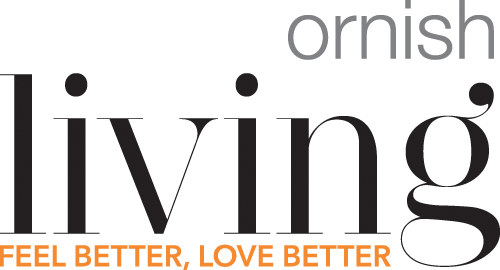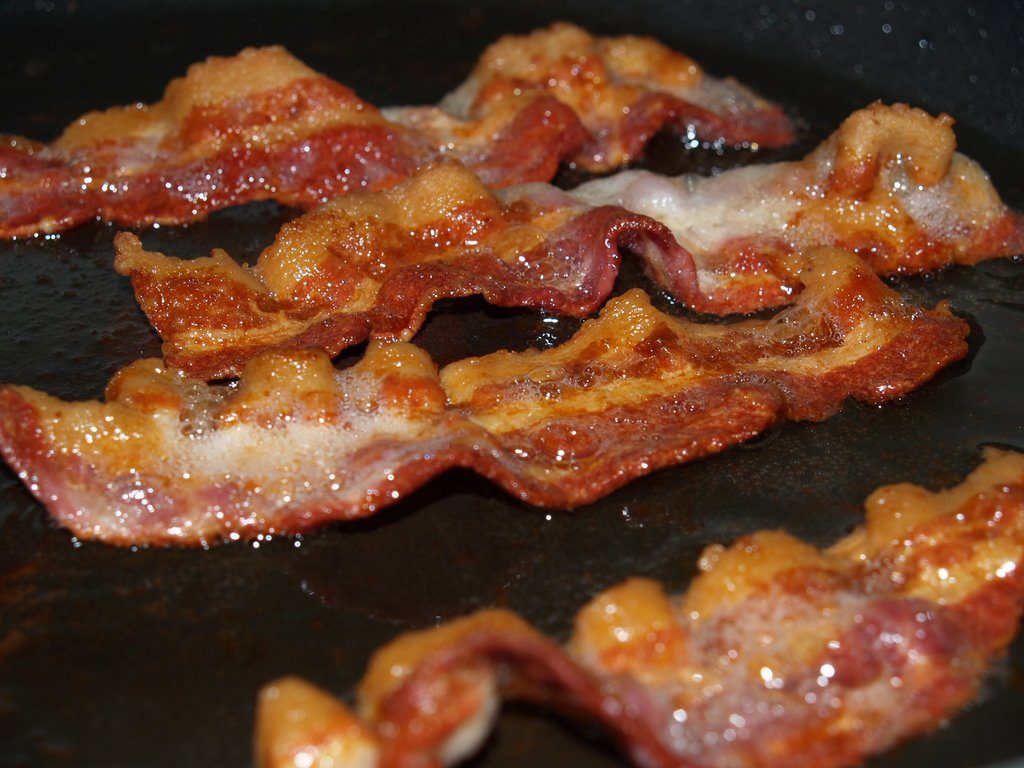
What is the Difference Between the Cholesterol We Make and the Cholesterol We Eat?
Photo Credit: Cyclonebill, via Flickr Creative Commons
All dietary cholesterol comes from eating animals: meat, poultry, fish, eggs and dairy, though other foods that contain saturated fats and oxidized fats may stimulate your body to make more cholesterol or make the cholesterol in your body sticky (more on this later: oxidized cholesterol = sticky cholesterol).
You can lower cholesterol levels dramatically by changing your diet
We don’t need any dietary cholesterol because our body makes all the cholesterol it needs in the liver. Most healthy bodies do a fine job processing a limited amount of daily cholesterol.
In the past decades, the FDA has recommended limiting cholesterol to 300mg a day. (For example, a large egg has 200mg of cholesterol), but now this recommendation is gone. They say dietary cholesterol is ‘no longer a nutrient of concern.’
That doesn’t mean, however, that we can now simply eat as much cholesterol heavy food as we want. Eating too much cholesterol, especially cholesterol with saturated fat, found mostly in fatty meat and dairy – like butter, bacon and burgers, can increase plaque in your arteries. In order to understand why, you have to understand how we process cholesterol.
How We Process Cholesterol
When you eat a meal high in cholesterol, your cholesterol levels go up and stay up for 6-7 hours, but if a doctor gives you a blood test to check your fasting level, which is the typical way that cholesterol is checked when trying to understand the effect of a medication, the test will not register this dietary rise in cholesterol.
The reality is that people eat approximately every 4-5 hours, and if a person eats cholesterol at each meal their body is exposed to higher levels of cholesterol most of the time, except in the morning when they have been fasting.
It is important to understand that these repeated temporary rises in cholesterol are largely responsible for the plaques in arteries. Since the 1970’s doctors and researchers have recognized that Atherosclerosis is largely a postprandial disease, meaning that it’s a disease that results from the high levels of cholesterol after eating.
New research is also now pointing to the danger of oxidized cholesterol, which is a direct result of the way we prepare meats. For example, grilled meat, meat that has been frozen for a long time, and meat that is reheated all have more oxidized cholesterol. Cholesterol oxidation can also happen inside a body that is full of inflammation as a result of obesity, infections, auto-immune disease and other causes. This oxidized cholesterol is much more likely to be laid down as plaque than brought back to the liver for processing into hormones or cell membranes.
So, it is both the spikes in the cholesterol we eat and the oxidized cholesterol that gets put into plaques in a body, especially one that is already inflamed or compromised.
Change Your Diet, Change Your Cholesterol
There is a common myth that you can’t change cholesterol by diet alone. The reason for this belief is that studies comparing the difference between the standard American diet and the American Heart Association diet did not show a significant difference in the levels of cholesterol. The problem, however, is that the American Heart Association Diet is not really a low cholesterol diet.
Dr. Ornish and his colleague at The Preventive Medicine Research Institute have shown that you can lower cholesterol levels dramatically by changing your diet. In a study of participants who went on the Ornish Lifestyle Medicine diet, which focuses on plant-based protein and where daily cholesterol is 10mg or less a day, participants averaged a 40% decrease in cholesterol without medication.
The Advantages of a Plant–based Diet
We have also found that it’s not just the fat in meat, but also the meat protein that negatively affects our health. A 2014 study published in Cell Metabolism compared groups who eat a high meat protein diet and those who eat a high plant protein diet. The study found a 75% increase in total mortality, a 400% increase in cancer risk, and a 500% increase in diabetes among those who eat meat. Therefore, there’s a big upside to decreasing or stopping the amount of meat that you eat.
Other Risk Factors
There are many risk factors other than blood cholesterol that help us understand heart disease risk and progression. High cholesterol is clearly an important risk, but not as important as many other factors like stress, isolation, loneliness, depression, inflammation, high blood pressure, a sedentary lifestyle and high blood sugar. These markers are all improved on the Ornish Lifestyle Medicine Program. Depression scores, for example, routinely drop by 50%, blood sugar and blood pressure drop dramatically, inflammation markers decrease and most participants decrease or come off many medications.
That’s why food is not the only focus of the Ornish Lifestyle Medicine program. The program includes 4 equally weighted parts. The eating program is a plant-based diet that is naturally low in fat and almost free of cholesterol with an abundance of healing nutrients. The program also includes exercise, stress management and group support. The combination of these elements help to bring about the physiologic changes that slow, stop and reverse the progression of vascular disease.
We closely follow the latest research on nutrition, and surprisingly, with a few modifications, the diet we recommended 40 years ago is the same as the diet we recommend today.








